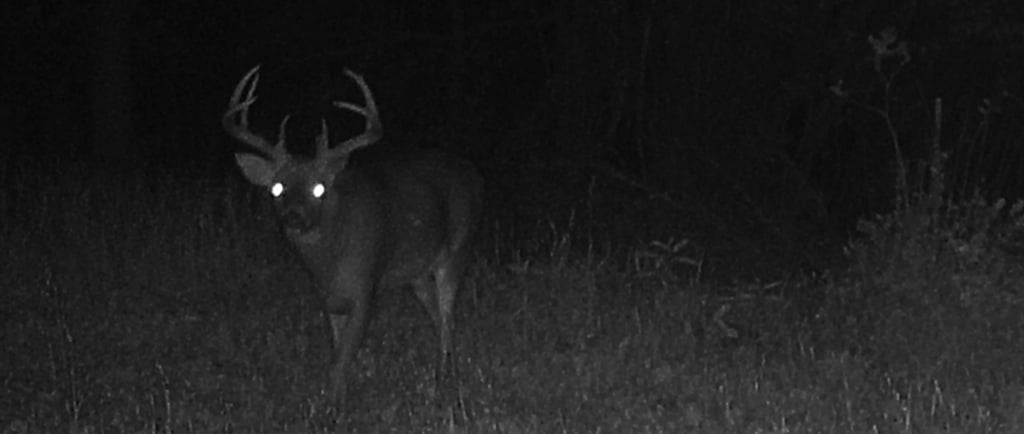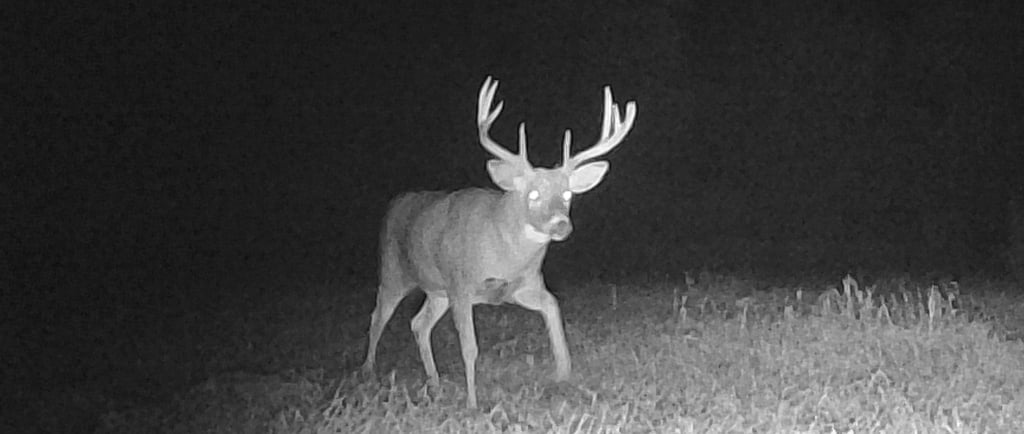The "OCTOBER LULL" SOLUTION
Solution to "nocturnal" whitetail movement
HUNTING STRATEGIES
Owen Brick
10/6/20254 min read

The cameras go quiet. The bucks you watched all summer vanish. Suddenly, it feels like deer have gone “nocturnal.” Many hunters blame acorns, instincts, or even the time of year. But the reality is, the October lull isn’t caused by nature - it’s caused by hunters.
This period is one of the most misunderstood times of the season. While some hunters notice it early to mid-October, others feel its effects as early as late September. No matter when it happens, the results are the same: frustration, fewer daylight pictures, and the belief that deer have simply shut down. In this article, we’ll clear up the myths, explain the real cause of the lull, and outline the strategies you can use to avoid it entirely.


The Real Cause
The cause of the “October lull” is simple: hunting pressure. When hunters overhunt food sources and repeatedly intrude on their land, deer stop feeling secure during daylight hours. It doesn’t matter how good your food plots or cover are; if deer are pressured, they won’t risk exposing themselves in the daylight. Mature bucks, especially, will not tolerate any level of pressure. That’s why so many hunters only capture trail camera photos of them during the middle of the night, safe under the cover of darkness.
It’s also important to remember that whitetails feed five times within a 24-hour period. Two of those feedings occur during daylight in secure morning bedding areas and one at safe evening food sources. If you’re only getting pictures at night, it means deer are completing their daylight feedings somewhere else. Late-night trail camera pictures reveal that deer are traveling a long way to reach your property.
This is unfortunately where most hunters get it wrong. They assume the deer live on the property, but they are just “nocturnal”. Nothing could be further from the truth. In reality, pressure has made your property unsafe, and deer have shifted their daylight activity elsewhere.



The Acorn Misconception
One of the most common excuses for the lull is that “the acorns are dropping.” While deer certainly browse acorns, they cannot just consume acorns alone. Acorns are tough to digest and part of their woody browse diet, usually consumed during morning bedding feedings. Whitetails require green, highly digestible food to balance their nutrition and wash down the woody browse consumed earlier in the day. Simply put, acorns may influence deer movement slightly, but they do not cause deer to go nocturnal. Hunting pressure does.
The Solution
To understand the “October lull,” we first have to look inward. There is hope for this often dreaded time period because you can end it! By changing your overall hunting approach, early October can shift from a lousy time to one of opportunity and excitement.
The best way to counter this man-made problem is to avoid the “all-in” mindset. Throwing all your cards on the table too early almost guarantees a nocturnal herd. Instead, focus on quality over quantity. Hunt with patience and purpose, not just frequency.
Use strategy, history, and weather to decide when and where to sit. A handful of smart, well-timed hunts will always outperform a season of high-pressure, random sits.
Most hunters get this wrong every single year. But if you get it right, you’ll be the property consistently drawing daylight deer activity. It doesn’t require the “best” food plots or the “best” cover. All you truly need is adequate cover, dependable food, and a lack of pressure.



Public vs Private
On private land, success depends on building and maintaining an environment where deer feel secure. Every sit should be approached with the mindset of living to hunt another day. Hunt smart, be patient, and pick the right times and locations. Consistent daylight movement comes from pressure-free conditions, not constant intrusion.
Public land is a different game. To find success, you must locate areas with less hunting pressure and move quickly before other hunters do.
If you’re the type of hunter who prefers a mobile, run-and-gun style - bouncing between areas - then an aggressive approach makes sense. In that case, go all in. The pressure you leave behind won’t matter if you’re not returning until next season.
Conclusion
The “October lull” isn’t a mystery of whitetail instincts - it’s a reflection of hunting pressure. Deer don’t simply vanish or turn nocturnal; they adapt to survive. If your property feels unsafe, they’ll shift their daylight activity elsewhere.
The good news is you can change that outcome. By hunting with patience, strategy, and precision, October can be one of the most rewarding times of the season. Limit intrusion, choose your sits strategically, and maintain a property where deer feel secure.
Whether you’re on private ground building consistency or chasing opportunity on public land, the concept is the same: hunt smarter, not harder. Do that, and the so-called “October lull” will transform from a season of frustration into a season of success for this fall and for years to come!
Copyright© 2025 WHITETAIL SYSTEMS AND SERVICES, LLC
